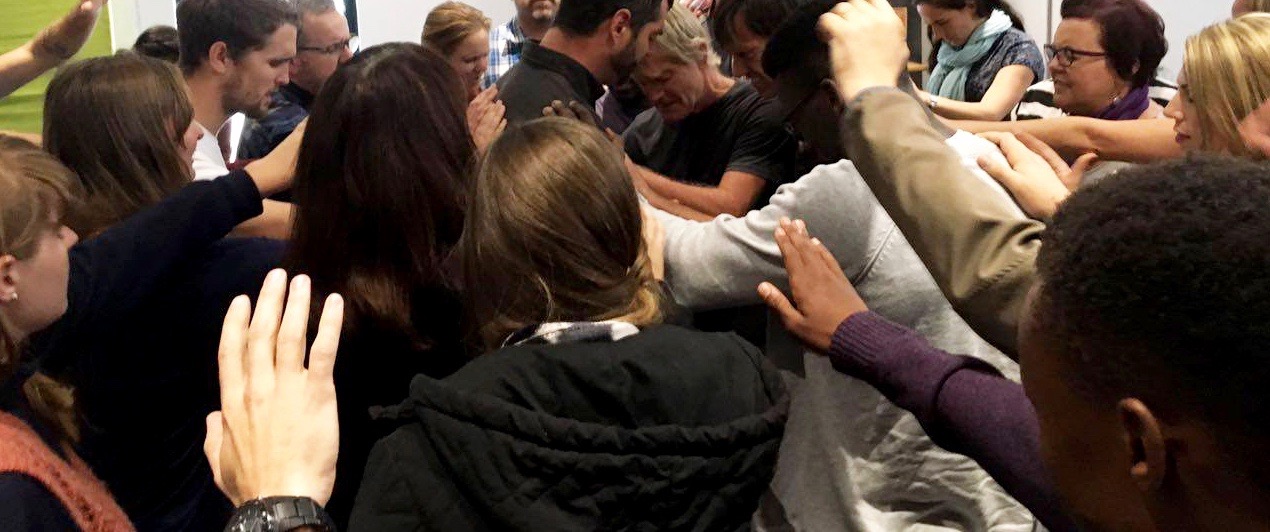Old Testament Laying on of Hands
Our faith has its roots in the Old Testament. Words and themes such as anointing, elders, congregation, salvation, faith, kingdom and sin all find their origins in the Hebrew Bible. The laying on of hands was also a Jewish practice which many of the early Christians, who were Jews, would have understood.
We see that the Israelites practiced the laying on of hands in various ways:
- In worship: the guilty worshipper would lay his hands on the animal, which would symbolise the transfer of sin from the sinner into the substitute destined to die (see Leviticus 1:4, 16:21).
- In family: the laying on of hands was practiced when a father would impart blessing to his children (see Genesis 48:14-15). We also see Jesus do this: He lays hands on children and blesses them.
- In leadership: the laying on of hands was practiced for ordaining and transmitting authority. For example, Moses commissions Joshua, publicly endorses him and transfers some of his authority on him in this way (Numbers 27:18-23).
New Testament Examples
In the light of these practices, we now look to the New Testament. Here we see three main purposes which caused believers to lay their hands on others.
1. Healing
The power of the Holy Spirit was often conveyed through physical touch (Luke 6:19). People would come to Jesus asking Him to lay hands on them (Matthew 9:18), and this was recognised as the primary way that Jesus healed. In Acts, we see the disciples laying their hands on the sick (see Acts 28:8, 9:12). Obviously the laying on of hands is not a formula for healing to occur, but it needs to be combined with faith in God’s ability to heal (see James 5:14-16).
2. Commissioning for ministry
This is similar to the Old Testament, where hands were laid on leaders to ordain and transmit authority. In Acts 6, we see the first deacons ordained in this way. These seven men were already full of the Spirit, so the laying on of hands seems more symbolic here, rather than an actual receiving of authority. There are other examples, such as Acts 13:1-3, when Paul and Barnabas are released as apostles.
In 1 Timothy 5:22, Paul says to Timothy, ‘Do not be hasty in the laying on of hands’. In the context, he is speaking of elders and most likely is saying to Timothy not to be too hasty to appoint them. Ordaining elders should be done prayerfully and with great care.
With these Scriptures, we see an important principle: the call of God on our lives should be confirmed through leaders. The laying on of their hands to send, commission and release us is God’s pattern. Make sure you are sent and not just ‘went’!
3. An impartation of the Spirit, His gifts and power
‘And God was doing extraordinary miracles by the hands of Paul’ (Acts 19:11). This does not refer to some kind of magical power that Paul had, but rather that God was doing miracles literally through his touch. The Lord often fills people with His Spirit and imparts spiritual gifts through hands being laid on them. (see Acts 8:17, Acts 19:6). We also see the example of Timothy receiving gifts in this way: ‘Do not neglect the gift you have, which was given you by prophecy when the council of elders laid their hands on you’ (1 Tim 4:14). I’ve experienced this many times over the years and have received much benefit and blessing from it.
The wonder of the new covenant is that God empowers all who are willing, even the most unlikely of people, such as you and I. Ananias, an ordinary believer, laid hands on Paul soon after his conversion, and this great future-apostle gets filled with the spirit and healed (Acts 9:17). God does not limit His power to a select few.
Why the Laying on of Hands?
The laying on of hands is a wonderful picture of how God chooses to use us. His divine power – His holy hands – moves through our prone-to-sin, frail hands. All we need to do is to be available and to trust Him. I’ve also found that this doctrine is God’s way of reminding us that we need one another. The release of leaders, the prayer of healing, the impartation of gifts – these all take place as we allow faith-filled, ordinary people to put their hands on us. This all takes place through living in Christian community and in an atmosphere of risk and love.
Even though the laying on of hands is such a foundational doctrine, it is one we need to continue to practice and appreciate. It is one of God’s simple means of bringing His rule to bear in the lives of people whom He loves.











